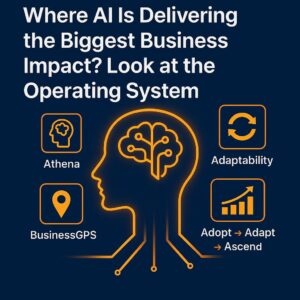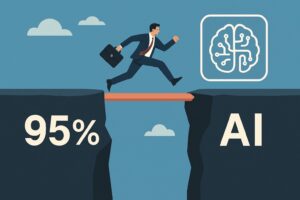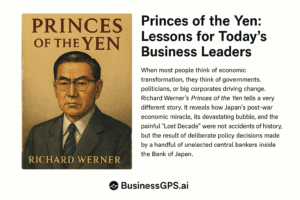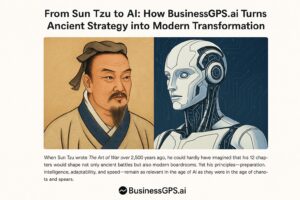
Navigating AI Adoption: A CEO’s Candid Review of BusinessGPS.ai
It’s 3 am and I’m staring at the ceiling, mind racing. Over the last decade our £250 m drinks company has quadrupled in size, yet I feel like we’re always chasing. Competitors launch new products every month while we spend endless meetings debating last quarter’s decisions. Everyone is working harder, but we’re not getting ahead. I’m the CEO, the person who’s supposed to have answers, yet the board is asking about our “AI strategy” and I’m not even sure what that means.
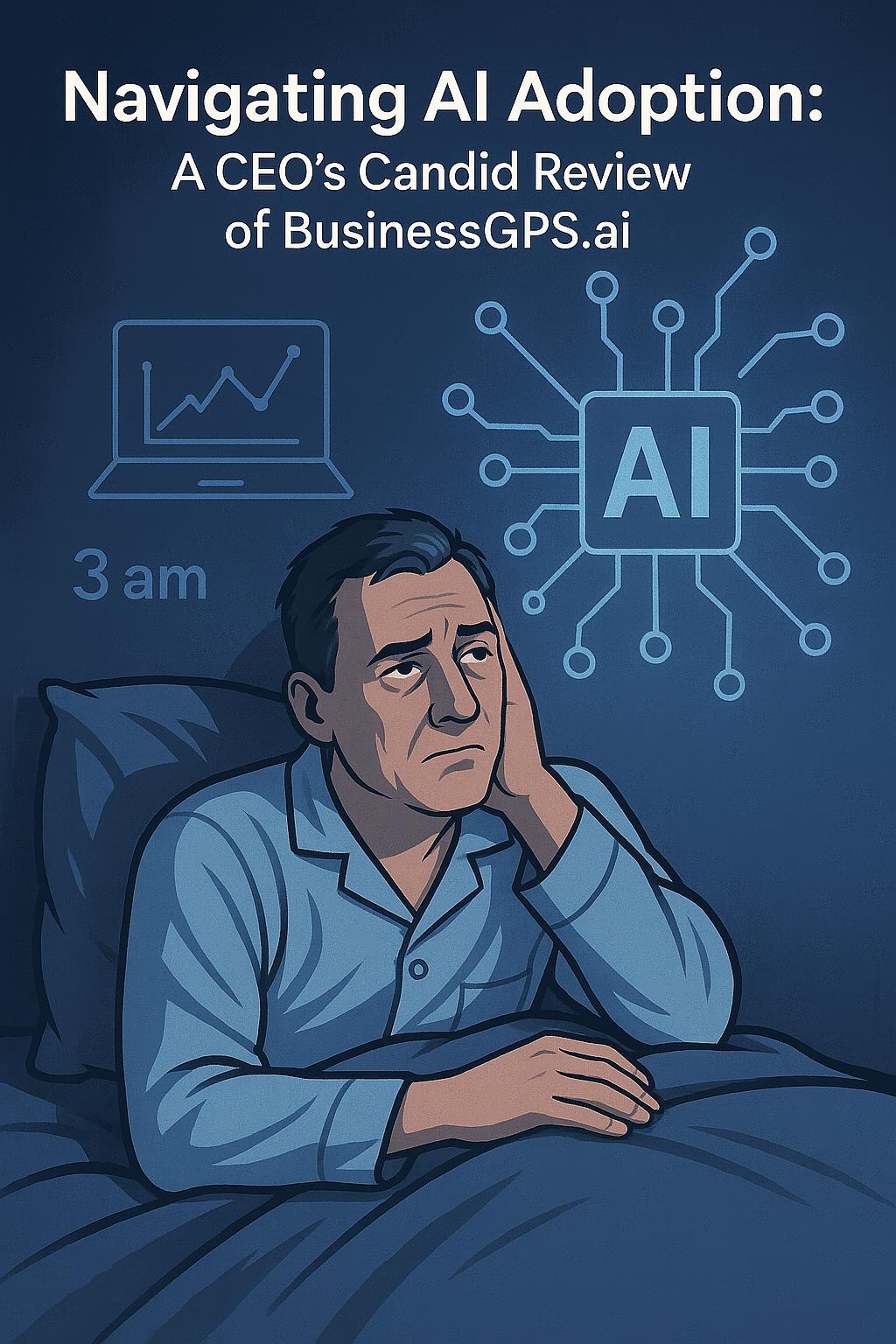
We turned to BusinessGPS.ai and its Success Map to help us make sense of our situation. The process starts with a wide‑ranging, 27‑step framework called Diagnose–Design–Act/Opportunity‑to‑Operations. Phase 1 (“Diagnose”) forces you to tune into the market and your organisation, codify outcome‑based targets and create a change strategy that aligns business and technology. Phase 2 (“Design”) aligns governance, operating models and ways of working. Phase 3 (“Act”) gets you ready for launch and operations. It’s a big canvas; at first it felt overwhelming, but having a structured map was strangely comforting. Instead of struggling to guess where to begin, we could trace our journey step by step.
The Success Map assessment highlighted clear strengths. Our technology engineering scored green: we have a robust SAP platform, solid DevOps pipelines and a capable data lake. Governance agility also scored highly; our programme board meets regularly, makes decisions quickly and recalibrates when signals change. We were commended for having “change champions” – passionate employees who believe in transformation and influence their peers. Those validations were reassuring.
However, the assessment also uncovered some uncomfortable gaps. We were weak on strategic sensing: we don’t systematically gather external signals or early warnings, so by the time we react to market changes we’re already behind. Outcome-based targeting was amber; while we talk about revenue, margin and working‑capital improvements, we haven’t codified specific targets or cascaded them across teams. Our change strategy was flagged as high risk because, although we have a plan, it isn’t truly integrated – IT and the business still operate in silos. Finally, launch activation was red. We tend to finish programmes and throw them over the fence, only to be surprised by resistance and adoption issues.
The O2O roadmap built from the assessment was invaluable. By following the sequence, we could see how weak strategic sensing at Step 1 ripples through the entire lifecycle. If we don’t tune into market shifts now, our final product might already be obsolete when we launch in two years. If we don’t agree on measurable business outcomes in Step 2, the CFO can’t link investments to P&L improvements. Without a robust change strategy in Step 6, the CHRO’s worst fears of burnout and turnover will come true. And if we delay preparing the organisation for launch (Step 9), even the best technology will land with a thud. The Success Map forced us to confront these risks, quantify their consequences and propose interventions – from establishing a “tune‑in” office for continuous sensing to formalising a Change Readiness Office to coordinate adoption.
As I reflected on the process, several insights stood out. First, BusinessGPS.ai demystifies AI. It doesn’t promise a magic algorithm that will fix your business. Instead, it treats AI as an amplifier for your existing strategy – a tool to sense, simulate and scale change. That realism is refreshing in a market full of hype. Second, the combination of qualitative interviews and quantitative scoring surfaces blind spots. Areas we thought were strengths turned out to be amber or red when we dug deeper. Third, the tool drives conversation across functions. Our CTO realised that “engineering excellence” means little if our sensors and data streams aren’t tuned to external changes. The COO saw that constant fire‑fighting is a symptom of poor governance and unclear outcomes. The CFO understood that “spending millions on change” without clear KPIs erodes investor confidence. The CHRO warned us that burnt‑out teams will walk away if they don’t see a vision and career path.
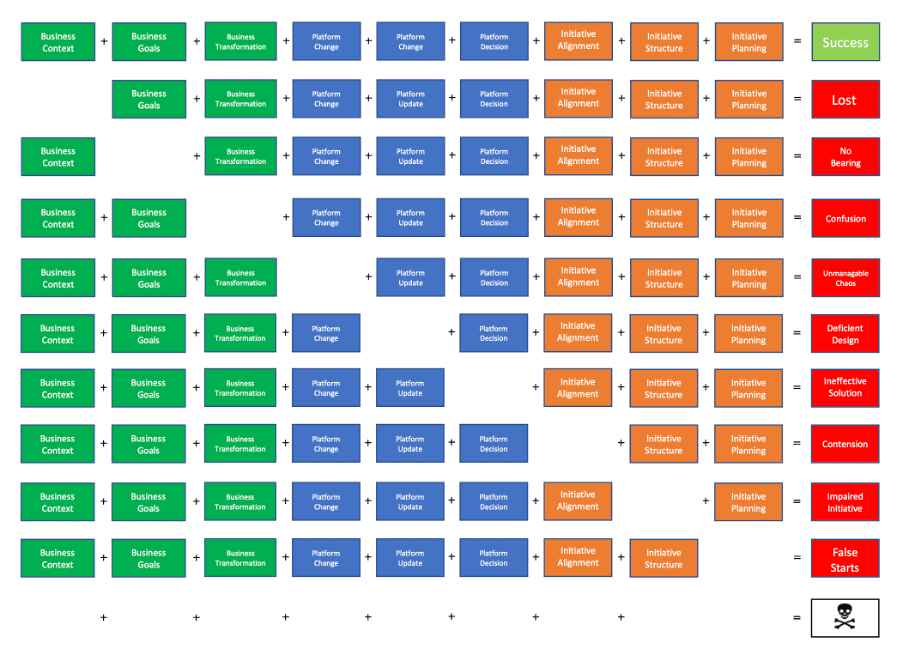
The assessment isn’t perfect. Because it relies heavily on our inputs, there’s a risk of circular validation. I’d like to see more independent probing: ask for evidence of budgets and resource plans rather than accepting our word that we have “enough people.” Challenge assumptions about go‑live dates by simulating different timelines and stress‑testing our capacity. The scoring could be more consistent across sections; some areas felt lenient while others were harsh. And the platform should more clearly separate facts from recommendations. Still, these are refinements rather than fundamental flaws.
My biggest takeaway? AI adoption isn’t just about algorithms. It’s about aligning technology with strategy, governance, people and operations. BusinessGPS.ai gave us a map to chart that alignment. We now have a plan to build a real‑time sensing capability, establish a KPI dashboard, develop a simulation engine, create a change‑management hub and implement risk‑adjusted governance. We’ll pilot these initiatives, measure outcomes and adjust course. We’ll also insist that BusinessGPS.ai continues evolving – adding independence, deeper resource checks and scenario modelling – so that other CEOs can avoid the blind spots we encountered.
To my fellow CEOs who lie awake at 3 am feeling overwhelmed and behind: you are not alone. It’s easy to believe everyone else has it figured out. In reality, most organisations struggle to adapt to the pace of change. Tools like BusinessGPS.ai won’t magically solve your problems, but they provide structure, transparency and a common language. They turn anxiety into action. Embrace AI as an amplifier, not a silver bullet. Focus on people, risk‑adjusted governance and measurable outcomes. And, above all, recognise that vulnerability – admitting what you don’t know and seeking help – is the first step towards real transformation.
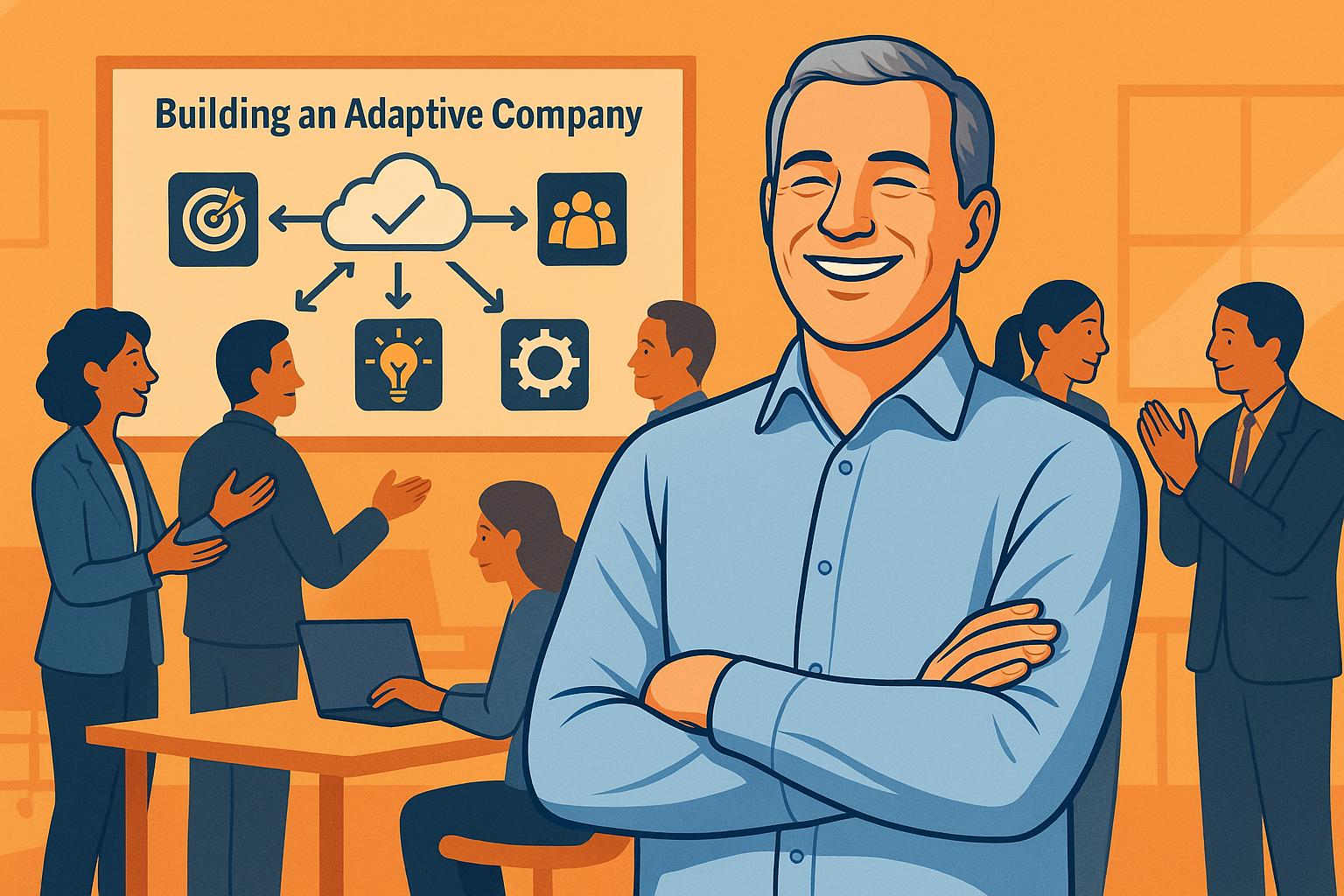
My biggest takeaway? AI adoption isn’t just about algorithms. It’s about aligning technology with strategy, governance, people and operations. BusinessGPS.ai gave us a map to chart that alignment. We now have a plan to build a real‑time sensing capability, establish a KPI dashboard, develop a simulation engine, create a change‑management hub and implement risk‑adjusted governance. We’ll pilot these initiatives, measure outcomes and adjust course. We’ll also insist that BusinessGPS.ai continues evolving – adding independence, deeper resource checks and scenario modelling – so that other CEOs can avoid the blind spots we encountered.
To my fellow CEOs who lie awake at 3 am feeling overwhelmed and behind: you are not alone. It’s easy to believe everyone else has it figured out. In reality, most organisations struggle to adapt to the pace of change. Tools like BusinessGPS.ai won’t magically solve your problems, but they provide structure, transparency and a common language. They turn anxiety into action. Embrace AI as an amplifier, not a silver bullet. Focus on people, risk‑adjusted governance and measurable outcomes. And, above all, recognise that vulnerability – admitting what you don’t know and seeking help – is the first step towards real transformation.


